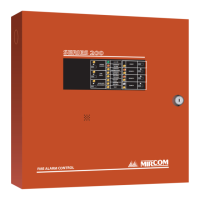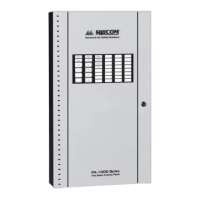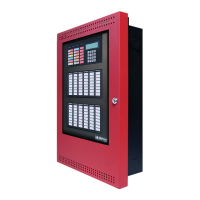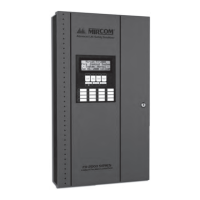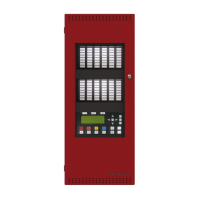52
Indicators, Controls and Operations
Annunciator General Alarm button. In a single stage system, these inputs act the same as
Non-Verified Alarms; however, if Correlations are enabled, General Alarm Initiating Circuits
are correlated to ALL indicating circuits.
9.7.9 Property and building safety
This is a supervised general-purpose non-latching input used mainly for correlating to a relay
circuit associated with property and building safety. No other system condition occurs as a
result of its activation (short circuit), although it is supervised for Trouble (open circuit).
9.7.10 Trouble-Only
The Trouble-Only circuit monitors a Trouble Condition from an external device such as QX-
5000 Audio System. Both open and short circuits generate a non-latching Trouble condition.
9.8 Indicating (Signal) Circuit Types
9.8.1 Silenceable Signal
The Silenceable Signal circuit is used for audible devices such as bells and piezo mini-horns
that may be silenced either manually or automatically. While sounding, these devices follow
the pattern appropriate for the condition: the configured Evacuation Code (default is Temporal
Code) during Single-Stage Alarm or Two-Stage General Alarm, or the Alert Code during the
alert (first) stage of a two-stage alarm.
9.8.2 Non-Silenceable Signal
The Non-Silenceable Signal Circuit is used for audible devices such as bells and piezo mini-
horns that may not be silenced either manually or automatically. While sounding, these
devices follow the pattern appropriate for the condition: the configured Evacuation Code
(default is Temporal Code) during Single-Stage Alarm or Two-Stage General Alarm, or the
Alert Code during the alert (first) stage of a two-stage alarm.
9.8.3 Silenceable Strobe
Silenceable strobes are silenced when the SIGNAL SILENCE button is pressed. For
synchronous strobes see section 10.0 Supported Protocols/Devices on page 56. (Note:
Strobes do not support any code pattern.)
9.8.4 Non-Silenceable Strobes
Non-Silenceable Strobes are not silenced when the SIGNAL SILENCE button is pressed. For
synchronous strobes see section 10.0 Supported Protocols/Devices on page 56. (Note:
Strobes do not support any code pattern.)
9.9 Evacuation codes (Signal Rates)
9.9.1 Single stage codes
Continuous On 100% of the time
Temporal Code 3 of 0.5 second on, 0.5 second off then, 1.5 second pause

